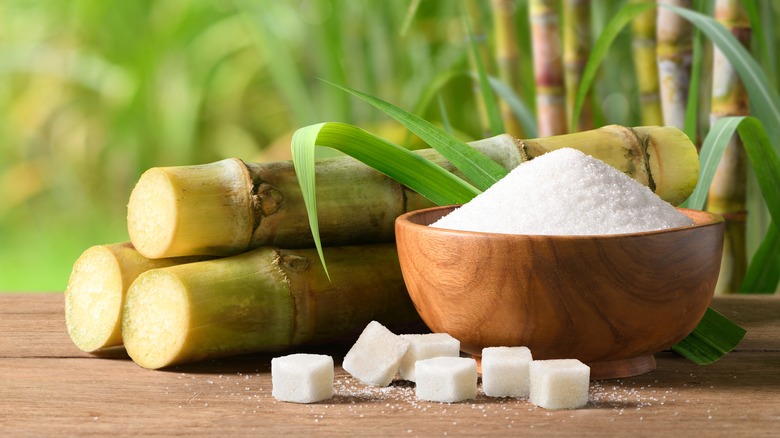Discover the Uses and Perks of Beet Sugar Vs Cane Sugar in Your Daily Diet
Exploring the distinctive top qualities of beet and cane sugar reveals more than simply their sweetening abilities; it highlights their distinct influence on health and wellness and culinary arts. Beet sugar, known for its subtle flavor, is frequently favored in delicate treats, whereas cane sugar, with its tip of molasses, includes splendor to robust recipes. Each type holds its own nutritional profile and glycemic effects, welcoming a much deeper understanding of their duties in a balanced diet plan and sustainable intake techniques.
Origin and Manufacturing Processes of Beet and Cane Sugar
The distinct climates and dirt kinds required for growing sugar beetroots and sugarcane add to distinctions in their growing practices and geographical circulation, affecting the economics and sustainability of their production. beet sugar vs cane sugar.
Nutritional Comparison Between Beet Sugar and Cane Sugar
In spite of stemming from different plants, beet sugar and cane sugar are nutritionally really similar, both primarily consisting of sucrose. Each offers about 4 calories per gram, equating to about 16 calories per teaspoon. Structurally, both sugars are made up of about 99.95% sucrose, with marginal quantities of various other compounds like wetness and trace element, which do not dramatically alter their dietary accounts.

Inevitably, when selecting between beet sugar and cane sugar based upon nutritional material alone, both deal identical advantages and drawbacks as they go to these guys are basically kinds of the exact same molecule-- sucrose, giving fast energy without other nutrients.
Effect On Wellness: Glycemic Index and Caloric Material
Exploring additionally into the results of beet sugar and cane sugar on health, it is important to consider their glycemic index and calorie material. The glycemic index (GI) of both beet and cane sugar is around 65, classifying them as high-GI foods, which can cause fast spikes in blood sugar degrees.
Each kind of sugar contains about 4 calories per gram, making their calorie web content matching. For those keeping an eye on caloric consumption, especially when managing weight or metabolic wellness conditions, recognizing this equivalence is important (beet sugar vs cane sugar). However, extreme consumption of any high-calorie, high-GI food can add to health issues such as excessive weight, heart problem, and insulin resistance.
Environmental and Economic Considerations of Sugar Manufacturing
Beyond health and wellness impacts, the manufacturing of beet and cane sugar likewise raises substantial environmental and economic problems. Sugar beet growing has a tendency to call for cooler climates and has a lower geographical impact contrasted to sugar cane, which grows in exotic regions.
Furthermore, the usage of chemicals and plant foods in both beet and cane sugar cultivation can result in soil deterioration and air pollution, additional impacting biodiversity and local water bodies (beet sugar vs cane sugar). The choice between cultivating sugar beet or cane frequently rests on local environmental problems and economic variables, making the sustainability of sugar production a complex concern
Culinary Applications and Taste Differences
While the environmental and economic aspects of sugar manufacturing are without a doubt significant, the option between beet and cane sugar likewise affects click here now cooking applications and flavor profiles. Beet sugar, stemmed from the sugar beet plant, is known for its extremely neutral taste. This makes it a flexible component in cooking, where it does not change the flavor of other components. It dissolves promptly and is perfect for usage in cakes, cookies, and pastries.
Walking stick sugar, removed from sugarcane, typically preserves molasses traces, which pass on a distinct splendor and depth. This minor molasses taste enhances the complexity of baked products, sauces, and marinades. It is specifically favored in items where a caramel touch is preferred, such as in brownies or gingerbread. The minor variation in dampness content between beet and cane sugar can affect the structure and uniformity of recipes, making cane sugar a preferred choice for particular recipes that benefit from its one-of-a-kind properties.

Conclusion
Finally, both beet and cane sugar have distinctive beginnings and production processes, offering comparable dietary profiles with small distinctions in sodium material and taste. While their impact on wellness, especially pertaining to glycemic index and calories, is similar, the site web choice between them usually steams down to environmental, economic aspects, and particular culinary requirements. Understanding these facets can lead customers in making informed decisions that line up with their health goals and flavor preferences.